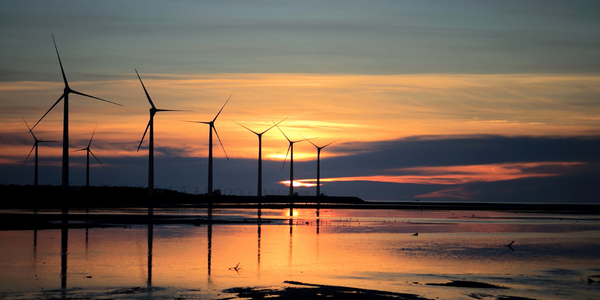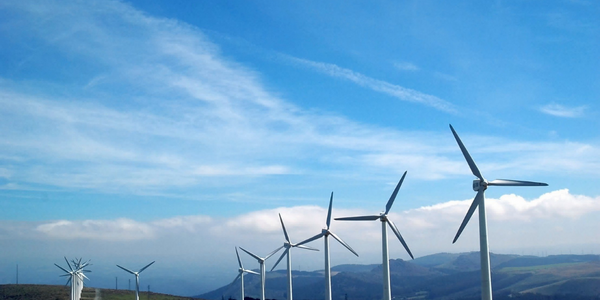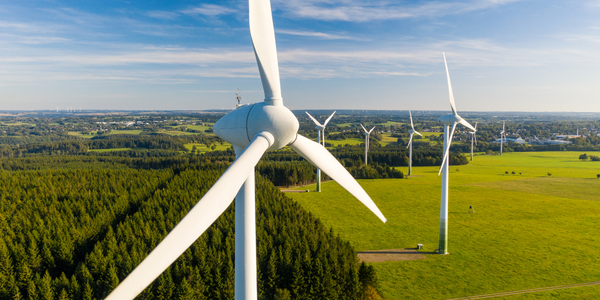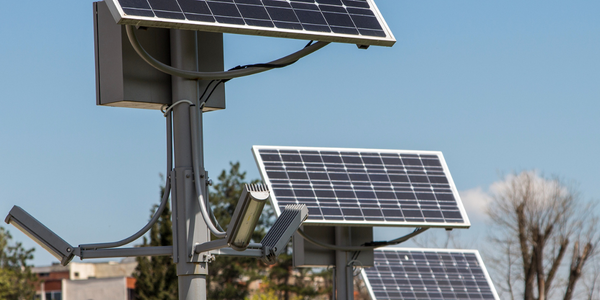Customer Company Size
Large Corporate
Region
- America
Country
- United States
Product
- ICONICS GENESIS64™
- ICONICS Hyper Historian™
- ICONICS Universal Data Management
Tech Stack
- SCADA
- OPC
- Modbus/TCP
Implementation Scale
- Enterprise-wide Deployment
Impact Metrics
- Cost Savings
- Productivity Improvements
Technology Category
- Automation & Control - Supervisory Control & Data Acquisition (SCADA)
- Platform as a Service (PaaS) - Data Management Platforms
Applicable Industries
- Renewable Energy
Applicable Functions
- Maintenance
- Quality Assurance
Use Cases
- Process Control & Optimization
- Predictive Maintenance
Services
- Cloud Planning, Design & Implementation Services
- System Integration
About The Customer
AES is an international power company located in North Palm Springs, California. The company specializes in power generation, utilities, and renewable energy. AES is dedicated to providing cleaner and more sustainable ways to create energy, investing in hydro, wind, solar, biomass generation, and carbon offsets as alternatives to traditional fossil fuels. AES Wind Generation, a special division of AES, explores worldwide opportunities for wind energy creation based on more than 25 years of experience in the power industry. They currently manage over 1,700 megawatts of wind capacity across the US, China, and Europe. In 2010, AES Wind Generation initialized a 49 turbine (one megawatt each) wind farm as part of the Mountain View IV Wind Energy Project.
The Challenge
AES Wind Generation, a division of AES, an international power company, was in need of a robust system that could perform calculations in real time from both user input and data coming from the field. They needed a system that could connect via open standard protocols and provide both instantaneous and aggregate data for monitoring and reporting. The company was also looking for a system that could be implemented quickly and efficiently, given the high amount of repetition involved with each unit having identical inputs and outputs. Additionally, they wanted a system that would fit into a virtual machine environment to facilitate backup and recovery in case of a hardware or software failure.
The Solution
AES chose ICONICS GENESIS64™ and Hyper Historian™ as a complete SCADA and Data Historian solution that would connect via open standard protocols and provide both instantaneous and aggregate data for monitoring and reporting. The global aliasing functions in ICONICS software gave AES a great advantage in quickly implementing the 49 turbines, once the first turbine was configured. AES brought all the data sources into OPC via various interfaces, such as the Modbus/TCP so the SCADA suite has a standard source of data. They also commissioned an OPC server to be built by Matrikon to convert the MHI CNET protocol into OPC. ICONICS’ Hyper Historian maintains all data from the turbines at the wind farm as well as overall production data and substation parameters. The ICONICS Universal Data Management, part of GENESIS64 Platform Services, is used to create numerous calculations that feed Hyper Historian and other applications.
Operational Impact

Case Study missing?
Start adding your own!
Register with your work email and create a new case study profile for your business.
Related Case Studies.

Case Study
Remote Monitoring & Predictive Maintenance App for a Solar Energy System
The maintenance & tracking of various modules was an overhead for the customer due to the huge labor costs involved. Being an advanced solar solutions provider, they wanted to ensure early detection of issues and provide the best-in-class customer experience. Hence they wanted to automate the whole process.

Case Study
Vestas: Turning Climate into Capital with Big Data
Making wind a reliable source of energy depends greatly on the placement of the wind turbines used to produce electricity. Turbulence is a significant factor as it strains turbine components, making them more likely to fail. Vestas wanted to pinpoint the optimal location for wind turbines to maximize power generation and reduce energy costs.

Case Study
Siemens Wind Power
Wind provides clean, renewable energy. The core concept is simple: wind turbines spin blades to generate power. However, today's systems are anything but simple. Modern wind turbines have blades that sweep a 120 meter circle, cost more than 1 million dollars and generate multiple megawatts of power. Each turbine may include up to 1,000 sensors and actuators – integrating strain gages, bearing monitors and power conditioning technology. The turbine can control blade speed and power generation by altering the blade pitch and power extraction. Controlling the turbine is a sophisticated job requiring many cooperating processors closing high-speed loops and implementing intelligent monitoring and optimization algorithms. But the real challenge is integrating these turbines so that they work together. A wind farm may include hundreds of turbines. They are often installed in difficult-to-access locations at sea. The farm must implement a fundamentally and truly distributed control system. Like all power systems, the goal of the farm is to match generation to load. A farm with hundreds of turbines must optimize that load by balancing the loading and generation across a wide geography. Wind, of course, is dynamic. Almost every picture of a wind farm shows a calm sea and a setting sun. But things get challenging when a storm goes through the wind farm. In a storm, the control system must decide how to take energy out of gusts to generate constant power. It must intelligently balance load across many turbines. And a critical consideration is the loading and potential damage to a half-billion-dollar installed asset. This is no environment for a slow or undependable control system. Reliability and performance are crucial.

Case Study
Remote Monitoring and Control for a Windmill Generator
As concerns over global warming continue to grow, green technologies are becoming increasingly popular. Wind turbine companies provide an excellent alternative to burning fossil fuels by harnessing kinetic energy from the wind and converting it into electricity. A typical wind farm may include over 80 wind turbines so efficient and reliable networks to manage and control these installations are imperative. Each wind turbine includes a generator and a variety of serial components such as a water cooler, high voltage transformer, ultrasonic wind sensors, yaw gear, blade bearing, pitch cylinder, and hub controller. All of these components are controlled by a PLC and communicate with the ground host. Due to the total integration of these devices into an Ethernet network, one of our customers in the wind turbine industry needed a serial-to-Ethernet solution that can operate reliably for years without interruption.

Case Study
Temperature monitoring for vaccine fridges
Dulas wanted a way to improve the reliability of the cold chain, facilitating maintenance and ensuring fewer vaccines are spoiled. Dulas wanted an M2M solution which would enable them to record and report the temperature inside vaccine refrigerators.

Case Study
IoT Powering A New Way to Light Streets with Bifacial Solar Panels
When James Meringer’s commercial contracting business experienced a rapid increase in solar projects, he also saw an opportunity to extend the benefits of solar by using the bifacial solar panels he’d become familiar with in new ways. Bifacial solar panels enable sunlight from both sides of the panel, making it a more efficient harvest of solar power. Seeing the panel’s power, James and his team set out to use the same technology for street lighting. Until now, solar street lights have served as utilitarian solutions that force designers to choose between form and function. The Mira Bella Energy team has changed that.






